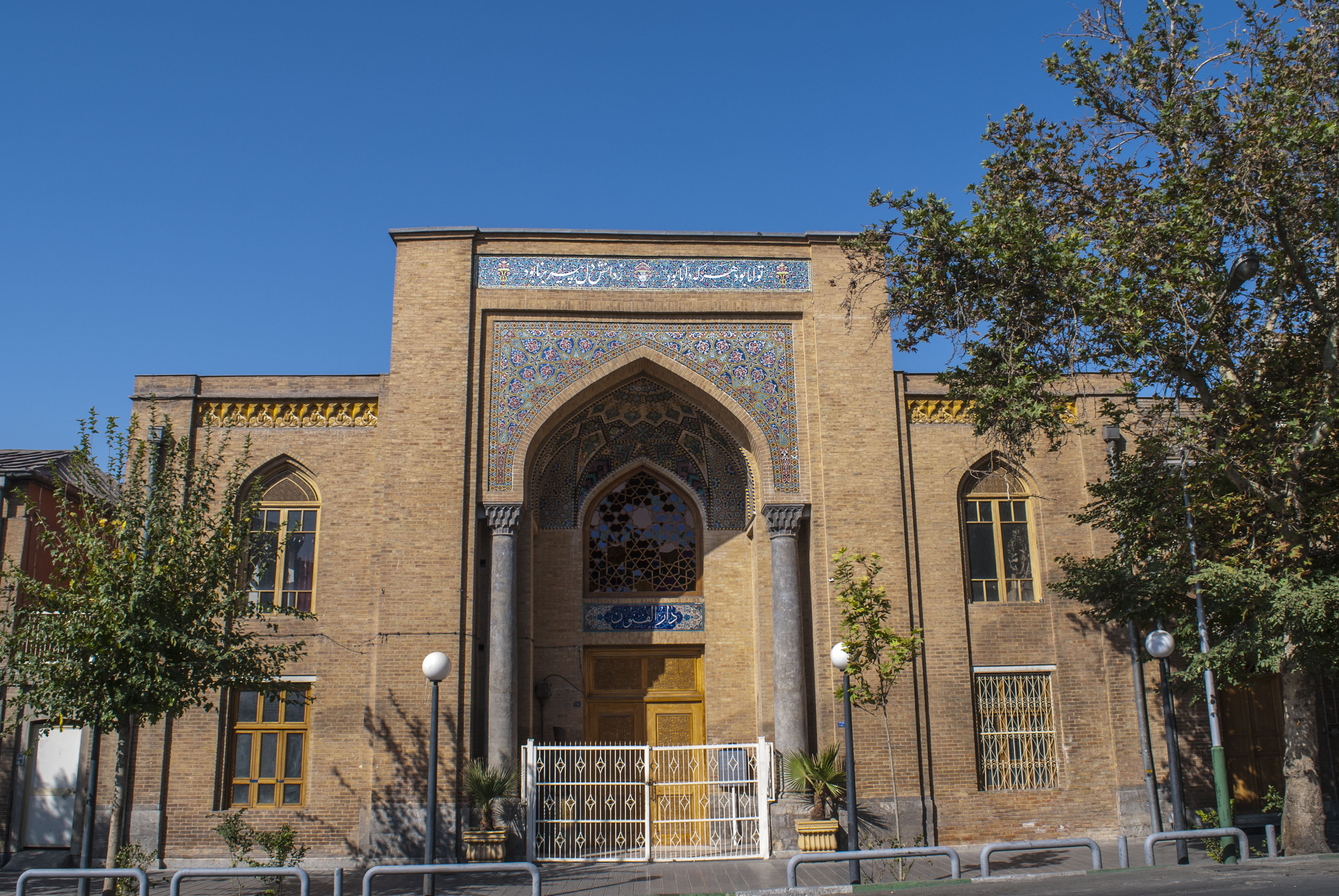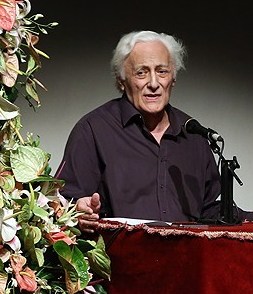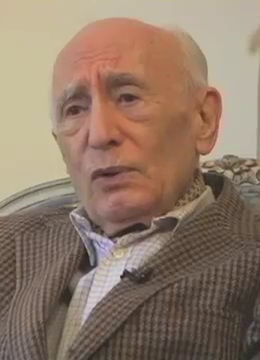|
Bahram Beyzai
Bahrām Beyzāêi (also spelt Beizāi, Beyzāêi, fa, بهرام بیضائی; born 26 December 1938) is an Iranian playwright, theatre director, screenwriter, film editor, and '' ostād'' ("master") of Persian letters, arts and Iranian studies. Beyzaie is the son of the poet Ne'matallah Beyzai (best known by his literary pseudonym "Zokā'i"). The celebrated poet Adib Beyzai, known as one of the most profound poets of 20th-century Iran, is Bahram's paternal uncle. Bahram Beyzaie's paternal grandfather, Mirzā Mohammad-Rezā Ārāni ("Ebn Ruh"), and paternal great-grandfather, the mulla Mohammad-Faqih Ārāni ("Ruh'ol-Amin"), were also notable poets. In spite of his somewhat belated start in cinema, Beyzai is often considered a pioneer of a generation of filmmakers whose works are sometimes described as the Iranian New Wave. His ''Bashu, the Little Stranger'' (1986) was voted "Best Iranian Film of all time" in November 1999 by a Persian movie magazine ''Picture World'' poll of ... [...More Info...] [...Related Items...] OR: [Wikipedia] [Google] [Baidu] |
Tehran
Tehran (; fa, تهران ) is the largest city in Tehran Province and the capital of Iran. With a population of around 9 million in the city and around 16 million in the larger metropolitan area of Greater Tehran, Tehran is the most populous city in Iran and Western Asia, and has the second-largest metropolitan area in the Middle East, after Cairo. It is ranked 24th in the world by metropolitan area population. In the Classical era, part of the territory of present-day Tehran was occupied by Rhages, a prominent Median city destroyed in the medieval Arab, Turkic, and Mongol invasions. Modern Ray is an urban area absorbed into the metropolitan area of Greater Tehran. Tehran was first chosen as the capital of Iran by Agha Mohammad Khan of the Qajar dynasty in 1786, because of its proximity to Iran's territories in the Caucasus, then separated from Iran in the Russo-Iranian Wars, to avoid the vying factions of the previously ruling Iranian dynasties. The capital has b ... [...More Info...] [...Related Items...] OR: [Wikipedia] [Google] [Baidu] |
Ta'zieh
Ta'zieh ( ar, تعزية; fa, تعزیه; ur, ) means comfort, condolence, or expression of grief. It comes from roots ''aza'' (عزو and عزى) which means mourning. Depending on the region, time, occasion, religion, etc. the word can signify different cultural meanings and practices: *In Iranian cultural reference it is categorized as Condolence Theater or Passion Play inspired by a historical and religious event, the tragic death of Hussein, symbolizing epic spirit and resistance. *In South Asia and in the Caribbean it refers specifically to the Miniature Mausoleums (imitations of the mausoleums of Karbala, generally made of colored paper and bamboo) used in ritual processions held in the month of Muharram. Ta'zieh, primarily known from the Iranian tradition, is a Shia Islam ritual that reenacts the death of Hussein (the Islamic prophet Muhammad's grandson) and his male children and companions in a brutal massacre on the plains of Karbala, Iraq in the year 680 AD. His d ... [...More Info...] [...Related Items...] OR: [Wikipedia] [Google] [Baidu] |
Persian Cinema
The Cinema of Iran (Persian: سینمای ایران), also known as the Cinema of Persia, refers to the cinema and film industries in Iran which produce a variety of commercial films annually. Iranian art films have garnered international fame and now enjoy a global following. Iranian films are usually written and spoken in the Persian language. Iranian cinema has had many ups and downs. Along with China, Iran has been lauded as one of the best exporters of cinema in the 1990s. Some critics now rank Iran as the world's most important national cinema, artistically, with a significance that invites comparison to Italian neorealism and similar movements in past decades. A range of international film festivals have honoured Iranian cinema in the last twenty years. Many film critics from around the world have praised Iranian cinema as one of the world's most important artistic cinemas. History Visual arts in Iran The earliest examples of visual representations in Iranian history ... [...More Info...] [...Related Items...] OR: [Wikipedia] [Google] [Baidu] |
Manuchehr Anvar
Manuchehr Anvar ( fa, منوچهر انور; born 13 October 1928) is a Persian writer, editor, translator, director and former BBC radio presenter''. Translations Into Persian * ''A Doll's House'' by Henrik Ibsen Into English * '' Kalat Claimed'' by Bahram Beyzai * ''Death of Yazdgerd'' by Bahram Beyzai See also * Esmaeel Azar * Tahereh Saffarzadeh * Seyyed Mahdi Shojaee * Ahad Gudarziani * Masoumeh Abad * Ahmad Dehqan Ahmad ( ar, أحمد, ʾAḥmad) is an Arabic male given name common in most parts of the Muslim world. Other spellings of the name include Ahmed and Ahmet. Etymology The word derives from the root (ḥ-m-d), from the Arabic (), from the ve ... * Akbar Sahraee References Living people Mass media people from Tehran Iranian radio actors Iranian translators 1928 births {{Iran-writer-stub ... [...More Info...] [...Related Items...] OR: [Wikipedia] [Google] [Baidu] |
Kalat Claimed
''Kalāt Claimed'' ( fa, فتحنامهی کلات, italic=yes) is a play by Bahram Beyzai, written in 1982. Text The play was composed in 1982, with identifiable inspirations from '' Macbeth'', and first published in Tehran early in 1984 by Damavand Publishing. Later it was published by Beyzai's exclusive publisher, Roshangaran. The same publisher printed Manucher Anvar's English translation in 2016. Plot The story is of two generals in the Mongol conquest of Khwarezmia and their disputes over the accession of Kalat (or even more likely Kalat-e Naderi) and its ultimate conquest by the Alans. In Other Languages There is one English translation by Manuchehr Anvar Manuchehr Anvar ( fa, منوچهر انور; born 13 October 1928) is a Persian writer, editor, translator, director and former BBC radio presenter''. Translations Into Persian * ''A Doll's House'' by Henrik Ibsen Into English * '' Kal ..., with minor modifications by the playwright's permission: ... [...More Info...] [...Related Items...] OR: [Wikipedia] [Google] [Baidu] |
Death Of Yazdgerd (film)
''Death of Yazdgerd'' ( fa, مرگ یزدگرد, ''Marg-e Yazdgerd'') is a 1982 Iranian drama film by Bahram Beyzai based on the play of the same name. Plot The story of the film is based on the murder of Yazdgerd III, the last emperor of Sasanian Persia, who while being hard pressed by the Arabs on his western flank, fled to Marv where he was slain by a miller in a mill, in which he had been taking refuge. The film begins with the Zoroastrian high priest (magus) of the Persian Empire, accompanied by the imperial army commander entering the mill to try the miller accused of murdering the emperor. The miller, his wife and his daughter, while trying to exculpate themselves, all express a different version of the same incident. As the story shifts, more questions come up than are answered. A central theme in the film is the social disaffection among the general population of Persia at the eve of the Arab Islamic conquests and inequality in the highly class-based society, in w ... [...More Info...] [...Related Items...] OR: [Wikipedia] [Google] [Baidu] |
Death Of Yazdgerd
''Death of Yazdgerd'' (or alternatively translated as ''Death of the King''; and whose original subtitle translates "Regicide") ( fa, مرگ یزدگرد) is a Persian play about the death of Yazdegerd III by Bahram Beyzai, often considered his ''magnum opus'', which he adapted into a film of the same name. Text In English The play was translated into English by Manuchehr Anvar and published in Tehran. Another English translation is named ''Death of the King'', published in ''Stories from the Rains of Love and Death: Four Plays from Iran'' in Canada. Notable productions Premiere Beyzai produced this play for the first time in the City Theater of Tehran from 10 September 1979 to 29 October. Susan Taslimi and Mehdi Hashemi Mehdi Hashemi (1944 – 28 September 1987) was an Iranian Shi'a cleric who was defrocked by the Special Clerical Court. After the 1979 Iranian Revolution, he became a senior official in the Islamic Revolutionary Guards; he was executed by the I ... pl ... [...More Info...] [...Related Items...] OR: [Wikipedia] [Google] [Baidu] |
Ehsan Yarshater
Ehsan Yarshater ( fa, احسان يارشاطر, April 3, 1920 – September 1, 2018) was an Iranian historian and linguist who specialized in Iranology. He was the founder and director of The Center for Iranian Studies, and Hagop Kevorkian Professor Emeritus of Iranian Studies at Columbia University. He was the first Persian full-time professor at a U.S. university since World War II. He was one of the 40 editors of the ''Encyclopædia Iranica'', with articles by 300 authors from various academic institutions. He also edited the third volume of the Cambridge History of Iran, comprising the history of the Seleucid, the Parthians, and the Sassanians, and a volume entitled ''Persian Literature''. He was also an editor of a sixteen-volume series named ''History of Persian Literature''. He had won several International awards for scholarship, including a UNESCO award in 1959, and the Giorgio Levi Della Vida Medal for Achievement in Islamic Studies from UCLA in 1991. Lecture series ... [...More Info...] [...Related Items...] OR: [Wikipedia] [Google] [Baidu] |
Theatre Of China
Theatre of China has a long and complex history. Traditional Chinese theatre, generally in the form of Chinese opera, is musical in nature. Chinese theatre can trace its origin back a few millennia to ancient China, but the Chinese opera started to develop in the 12th century. Western forms like the spoken drama, western-style opera, and ballet did not arrive in China until the 20th century. History Theatre in China dates back to as early as the Shang dynasty (16th century BC?– 1046 BC). Oracle bone records reference rain dances performed by shamans, while the '' Book of Documents'' mentions shamanistic dancing and singing. For the Zhou dynasty ( 1046 BC – 256 BC), evidence from the ''Chu Ci'' suggests that in the 4th or 3rd century BC State of Chu, shamans performed with music and costumes. Some scholars have identified poems from the ''Classic of Poetry'' as possible lyrics of songs accompanying court dances from the early or mid-Zhou dynasty. The Zhou royal court as w ... [...More Info...] [...Related Items...] OR: [Wikipedia] [Google] [Baidu] |
Theatre Of Japan
This article is an overview of traditional and modern Japanese theatre. Traditional Japanese theatre is among the oldest theatre traditions in the world. Traditional theatre includes Noh, a spiritual drama, and its comic accompaniment ; kabuki, a dance and music theatrical tradition; , puppetry; and , a spoken drama. Modern Japanese theatre includes (experimental Western-style theatre), shinpa (new school theatre) and (little theatre). In addition, there are many classical western plays and musical adaptations of popular television shows and movies that are produced in Japan. Traditional forms of theatre Noh and Noh and theatre traditions are among the oldest continuous theatre traditions in the world. The earliest existing scripts date from the 15th century. Noh was a spiritual drama, combining symbolism from Buddhism and Shinto and focusing on tales with mythic significance. , its comic partner, served as a link between the theological themes of the Noh play with the ped ... [...More Info...] [...Related Items...] OR: [Wikipedia] [Google] [Baidu] |
A Study On Iranian Theatre
'' Theatre in Iran'' (1965) is Bahram Beyzai Bahrām Beyzāêi (also spelt Beizāi, Beyzāêi, fa, بهرام بیضائی; born 26 December 1938) is an Iranian playwright, theatre director, screenwriter, film editor, and '' ostād'' ("master") of Persian letters, arts and Iranian studie ...'s seminal research on theater in the Persian world from the ancient times to the twentieth century. It has been described as "the definitive work on the history of Persian theatre." The text The chapters of the book were published as articles in advance, i.e. 1962 and 1963. In 1965 the writer published them as ''namayesh dar Iran'' (literally meaning "Spectacles in Iran") with the English title of ''A Study on Iranian Theatre'' on the back cover. The book became and stayed to be the major contribution in the field. Later, its publication was entrusted to Roshangaran Publishing, which came to be Beyzai's exclusive Persian publisher. In other languages * Beyzaì, Bahram. ''Storia del ... [...More Info...] [...Related Items...] OR: [Wikipedia] [Google] [Baidu] |
Bahram Beyzayi Wedding
Bahrām ( fa, بهرام) is a male given name. Other variants Behram, Bahran, Vahran, and Vahram ( uz, Баҳром, Bahrom and Tajik: Баҳром, Bahrom) The older form is Vahrām ( pal, 𐭥𐭫𐭧𐭫𐭠𐭭, in la, Varrames), also spelled Wahrām, literally meaning "smiting of resistance" or "victorious". It is name of several prominent figures in pre-Islamic Persia. In the Pahlavi language (Middle Persian), Bahram is another name of the Zoroastrianism, Zoroastrian divinity Verethragna in Avestan language, that is the hypostasis of victory and represents the planet Mars. Historic people * One of the Sassanid kings by that name: ** Bahram I, Bahrām I, ''r.'' 273-276 ** Bahram II, Bahrām II, ''r.'' 276-293 ** Bahram III, Bahrām III, ''r.'' 293 ** Ardashir II, ''r.'' 379–383, who also went by the name 'Ardashir Vahram' ** Bahram IV, Bahrām IV, ''r.'' 388–399 ** Bahram V, Bahrām V Gōr, ''r.'' 421–438 (often known as Bahram Gur) ** Bahram Chobin, Bahrām VI Čō ... [...More Info...] [...Related Items...] OR: [Wikipedia] [Google] [Baidu] |


.jpg)



.jpg)
